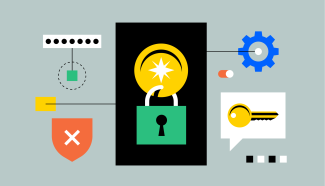
Safest Way To Store Cryptocurrency in 2024
Safest Way To Store Cryptocurrency in 2024
Bitcoin and cryptocurrency use is increasing the most in low—and middle-income nations. It is used for investing, sending remittances, protecting money, and substituting for financial services when they are difficult to obtain.
Many products and services have been launched to simplify cryptocurrency use for those who use it or are new to it; nonetheless, the growing rate of adoption and use has led to a rise in hacks and thefts.
Understanding how to store Bitcoin necessitates understanding the many types of wallets, such as exchange, hardware, mobile, and paper wallets, as well as the difference between hot and cold wallets.
There are various ways to store cryptocurrency, including physical devices, software, and even plain paper. Once you've learned more about each storage technique, you may select the wallet (or wallets) that will keep your cryptocurrency secure.
Depending on the individual's allocation and use case, the ideal way to store cryptocurrency is to employ a combination of hardware and mobile wallets.
Why Does Crypto Need Storage?
Cryptocurrencies are digital tokens that can be transferred using encrypted transactions over decentralized computer networks known as blockchains. While crypto tokens exist on the blockchain, crypto wallets are used to make the assets accessible, allowing you to transfer and receive tokens between multiple accounts.
Transferring funds between wallets involves sharing a public key or wallet address, which is essentially a unique account number for each form of cryptocurrency you own. Each 'account' contains a private key. Safeguarding this information with a wallet is an essential component of cryptocurrency storage.
Types of Storage
Custodial Wallet
A custodial wallet might be considered the standard solution for cryptocurrency storage. A third party stores your cryptocurrency for you, either cold (offline), hot (online), or a combination.
When you buy coins via cryptocurrency exchanges, applications, or stock brokers, they usually place them in a custodial wallet they control. If you want to keep it, you can move it to your personal hot or cold wallet.
Hot Wallet
Hot wallets are applications that keep your keys and connect to the internet. These wallets introduce vulnerabilities since they generate the private keys required to access cryptocurrency. While a hot wallet is the most common way for most users to access and transact with Bitcoin, it is subject to hacking.
Cold wallet
Hardware wallets are physical devices intended to store cryptocurrency safely offline, away from online vulnerabilities. They resemble USB devices and are regarded as the gold standard for storing significant quantities of cryptocurrency over an extended period.
Despite their high cost, the better security they give against online theft typically makes them a must-have for long-term crypto investors.
Physical Wallet
Physical wallet is other form of cold storage is a physical cryptocurrency wallet, often known as a paper wallet. A paper wallet prints out public and private keys, which are typically presented as a string of text and scannable QR codes.
These keys enable cryptocurrency transactions you receive, cryptocurrency using a paper wallet and public keys. To send cryptocurrency from the wallet, scan the public and private keys.
Paper wallets have the same benefits as hardware wallets: they give more security by keeping your cryptocurrency offline.
Best Practices For Protecting Cryptocurrency?
Diversifying your investments can lower risk, and spreading your assets among several storage types may be a good option. Diversifying your storage techniques reduces the chance of losing everything if one of your storage sources is compromised.
Use strong, unique passwords.
Using secure, unique passwords for your wallets and exchange accounts is an important first step toward securing your cryptocurrency. Unlike other passwords, a strong password should be a difficult mix of letters, numbers, and symbols.
Enable Two-Factor Authentication
Two-factor authentication is an extra layer of security that keeps your accounts safe from illegal access. Most cryptocurrency wallets and exchanges now support two-factor authentication, usually requires you to input a code or use a security token in addition to your password to access your accounts.
Regularly update your software
Keeping your wallet software and any connected programs up to date is critical. Software updates frequently include security patches to address newly found vulnerabilities. Regular upgrades ensure that your storage solution has the most up-to-date cybersecurity defenses.
Back Up Your Wallet
Backing up your wallet is critical if your device becomes lost or damaged. Most wallets provide a backup feature that lets you create a backup. Make sure to store your backup in a secure area.
Cold storage methods are the most secure way to store your keys, but you will eventually need to connect your storage device or enter your keys to utilize your Bitcoin. Connecting your storage wallet to an internet device only when you need to view and use your keys and keeping the device in a secure location are the best strategies to keep hackers from stealing your cryptocurrency.
